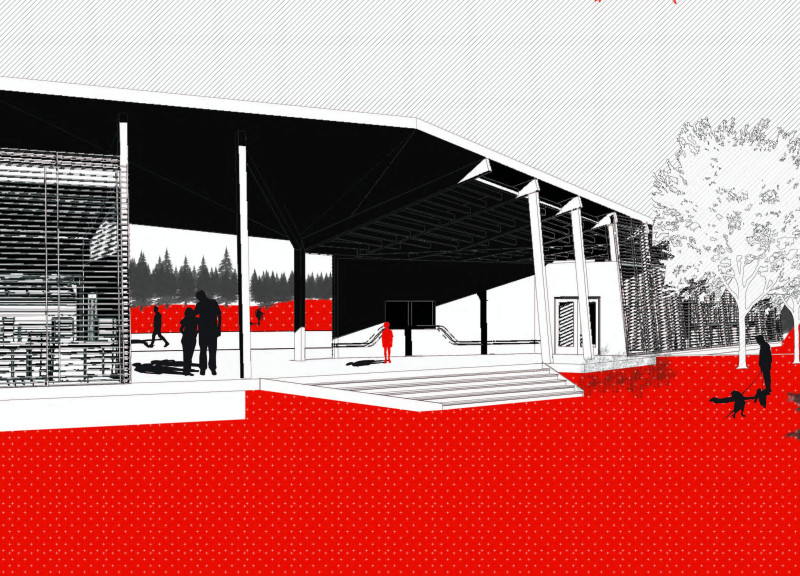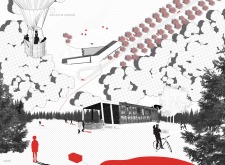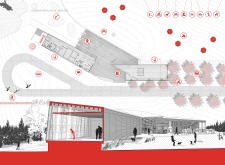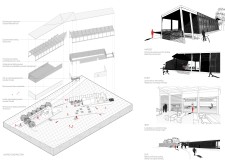5 key facts about this project
The overall function of KEMERİ NEST is to serve as a multipurpose community space where individuals can gather, learn, and engage in various activities. The architectural design emphasizes open spaces and flexibility, allowing for diverse uses and the ability to adapt to the changing needs of the community. This aspect is crucial for creating an environment that fosters belonging and encourages community interaction.
At the heart of the project is its architectural configuration, characterized by a low-profile roof with extended eaves that provide shade and a sense of shelter. This feature not only enhances the visual appeal of the structure but also promotes a harmonious relationship with the natural surroundings. The design employs a variety of heights, allowing for adequate daylight penetration and creating dynamic interior spaces that feel expansive and welcoming.
Materiality plays a significant role in the overall impact of KEMERİ NEST. The project utilizes locally sourced materials that reflect the natural beauty of the setting. Timber, specifically unfinished spruce or pine, is prominently featured in the exterior siding and structural framing, reinforcing the connection to the local landscape. The use of a standing seam metal roof offers weather resistance while maintaining sustainability through recyclable materials. Inside, birch wood panels contribute a warm aesthetic, complementing the overall design and creating an inviting atmosphere.
The spatial dynamics of KEMERİ NEST further enhance its functionality. The layout includes open community gathering areas that encourage social engagement, featuring a versatile outdoor amphitheater designed for events and performances. The architectural design also incorporates pathways for walking and biking, promoting an active lifestyle while integrating recreational activities into the fabric of the space. Educational zones are thoughtfully integrated, providing designated areas for workshops and learning opportunities, reinforcing the project's role as a community hub.
What sets KEMERİ NEST apart is its emphasis on an organic relationship with the environment. The design not only prioritizes sustainability but also actively invites occupants to engage with nature, fostering a sense of well-being and promoting ecological awareness. The unique combination of outdoor and indoor spaces contributes to an atmosphere that is both functional and aesthetically pleasing.
In examining the project further, readers are encouraged to explore the architectural plans, sections, and designs for a comprehensive understanding. By delving into the architectural ideas and details within KEMERİ NEST, one can appreciate the careful consideration that has gone into creating this multifaceted community space. The project stands as a testament to the power of architecture in enhancing lives and communities through thoughtful and sustainable design.


























